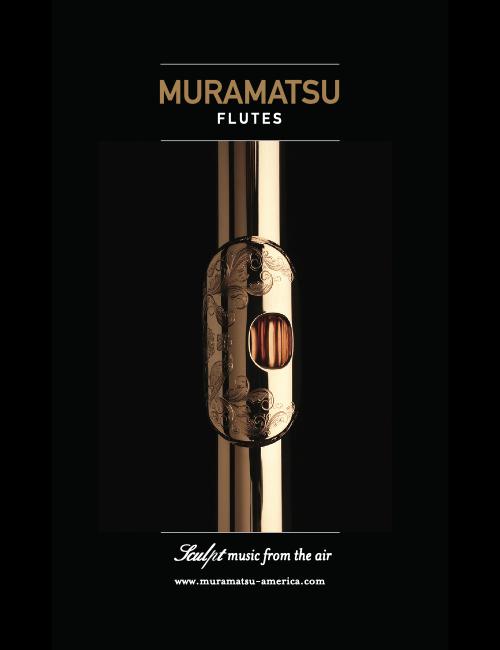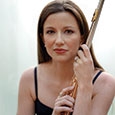When I was a student in high school and college, I sometimes felt anxious before starting my morning warm-up. Would today be a good or a bad tone day? I felt I had no control over sound production, and it was luck when my sound was resonant. There were days I got so frustrated that I put the flute away because I just couldn’t figure out what was wrong.
At some point, I decided to look at my practice room as more of a lab. I experimented with different elements of my playing and attempted to piece together how to make a consistently good sound. Since then, I have come to focus on three controls we use as flutists as well as basic adjustments that act as a software upgrade.
Overachiever
I tend to use too much air pressure when I play. Subconsciously, I associate expressive playing with more air. However, more is not always better when it comes to playing the flute. It may feel expressive because I’m putting forth more effort, but the sound is not necessarily better.
Throughout my career, I have recorded myself on a daily basis. At first, I feel overwhelmed listening to these recordings because I hear so much I don’t like. So, I’ve come up with a solution: focus on one element at a time rather than noticing everything at once.
1. How is my tone quality?
2. How is my intonation?
3. How is my rhythm?
4. Is my interpretation convincing?
When I was an undergraduate, I was recording and listening to the opening of the fourth movement of the Prokofiev Sonata. I immediately recognized that my sound didn’t consistently have a core. I also noticed I was breathing more often than usual. Could it be that I was using too much air pressure? When playing in front of a mirror, I saw that my aperture was bigger than usual. This was most likely to accommodate the amount of air I was using. In order to conquer element #1, I needed to investigate further. What if I used less air (in terms of volume) and tried keeping it more consistent? I recorded a few more phrases of the Prokofiev. It was better, but it was still inconsistent. One note would sound supported and beautiful and the next could be flat and dull. This was when I questioned my support’s efficacy.
What is Support?
I eventually found that if I made sure to engage my abdominal muscles while releasing my air, it was more reliable. To test this further, I attempted to sustain a whistle tone on a high A, twice above the staff, without allowing the pitch to slide between partials. It was much more stable when I engaged my abdominal muscles. That was something I wasn’t able to do before and proof that my air speed was more consistent this way. Yes, now I realize this was the moment I confirmed what supporting my air actually meant. I suppose to really take on your teacher’s advice, you needed to clarify it for yourself.
As I went back to recording and listening, my support seemed to be intermittent. It wasn’t enough to keep engaged in the same way throughout a phrase. Depending on the contour of the line, I needed to adjust my air pressure and air support accordingly. My support needed to be relentless and specific to whatever line I was playing. I needed to think ahead and prepare for larger intervals, and extremes of the low and high ranges. No wonder the 4th movement of the Prokofiev was especially difficult. The line changed direction often, and there were many large intervals. Different articulations also seemed to present a new challenge.
One More Control
In addition, as I improved my air pressure and support, I was experiencing symptoms similar to when I was overblowing. This was mostly cracking or splitting notes. I started to think about what a crack actually was: a higher partial of the note. For this issue, I practiced playing up the harmonic series. In order to have more control, I focused on my air pressure increasing and maintaining where my air was hitting the front wall of the headjoint. I started to pay more attention to my top lip being in front of my lower lip.
Learning to Fly
Now that I had a new approach, I was overwhelmed. Clearly a revision of my process was in order, but where to start? I reminded myself that simple was always best: I needed to find predictable shapes of lines. For example, Taffanel et Gaubert 17 Big Daily Exercises, No. 1.

The line goes up and down, stepwise. Start with the first note. Make sure you like the sound of the note as a long tone and gradually go to the second note. Since the line is going up, your support will need to increase. Go between those two notes (increasing support when descending and ascending) until you feel they have sonority. Eventually you will be able to play the first eight notes and feel comfortable using the controls. Note: when trying new things, celebrate small victories. You will not be able to play the entire exercise with this new relentless support all in one session! Give yourself time to develop muscle memory.
As you improve, go on to Reichert Op. 5, #1 (all slurred).

This one is a challenge because the descending intervals bring up other aspects of flute playing that improve our control’s functionality. For example, you may crack the lower note of the larger intervals in the first three big beats of each key. To avoid this, make sure you are using an “ah” vowel instead of an “ee” vowel when you play. For flutists, the oral cavity is a concert hall. Imagine playing a recital in a concert hall where the walls are moving while you play. The acoustic would be strange, to say the least. Keep the “ah” vowel sound, and, in addition, keep your soft palate up, and the back of the tongue down. Make sure there is never any tension involved.
At this point, I also noticed it was difficult to keep my oral cavity open without allowing it to change with the line. I spent a lot of time playing simple scales or melodies maintaining this space, no matter what happened. Playing in front of a mirror also helped, keeping an eye on my embouchure. No need for it to move too much, either.

Pilot’s License
Once I became more comfortable with Taffanel et Gaubert and Reichert, I started to learn to use the controls in repertoire. The opening of Faure Fantasie, Op. 79 presented the challenge of a soft dynamic in the high register that eventually dipped into the middle.

I realized I used to rely on gripping the air with my aperture to maintain the speed of air, causing my “ah” to drift to an “ee.” This hindered the quality of sound and tended to make my face tired. I needed to start trusting my increasing support when the line descended and maintaining the space between my teeth. I designed a simple exercise to help me maintain my air speed in ascending lines that I use to this day (on piccolo as well). Starting on F2, I ascend to G, A, B flat, and C, sustaining the C for three counts (all slurred). Going up chromatically from the F2 in F Major, I move on to F# Major. This exercise helps me increase my support several beats early in preparation for the sustained note.
I was finding that each register required slightly different settings within the controls. The middle register, for example, was easily overblown. I reduced my air pressure by another 5% or 10% and increased my support. It also seemed sensitive to air angle and keeping space between my teeth. The lack of resistance in this register made it easy to forget to support! The extra support seemed to create an artificial form of resistance. Meanwhile, the high register forced me to use my core because of its natural resistance. However, the shape of my oral cavity got smaller as I ascended, helping the speed of air again. It seemed I would do anything to avoid actually working my abdominal muscles when I needed them the most. I also found myself working my abdominal muscles and not applying enough air pressure, causing other issues. Sometimes I had to remind myself to actually release air.
After Years of Smiling in the Low Register
Today, as I learn Valerie Coleman’s Danza de la Mariposa, I realize I would not be able to play the presto at bar 15 without a reliable approach to the low register.

Even though I changed my process a long time ago, I still go through several phases in passages like this one. First, I slur the first two bars at a slow tempo, focusing on my controls and keeping my jaw dropped. From the downbeat of bar 15, I am already preparing for the low C with my support. I make sure I feel confident in my air angle so there is no chance for anything to jump up the octave. Once I’m happy with that version, I use the articulations Coleman has notated, allowing myself to lengthen the dotted notes. This gives me space to keep the air going. Finally, I play what is written, still at a slower tempo. My legato playing always sounds better than my articulated passages because there is far less multi-tasking, allowing air angle to be a focus.
Going Down the List
Going back to my four elements when listening to recordings of my playing: all of these will benefit from using controls. Without a supported sound, intonation is, of course, affected. The first and last notes of phrases tend to be neglected and therefore out of tune. I have made taking a breath, engaging my abdominal muscles, and releasing air all one motion, making sure support is present before I play my first note. I often check my first notes of a phrase with the tuner, thinking of the pitch beforehand but also memorizing the amount of pressure needed to play it in tune (especially in the middle and lower registers).
Surprisingly, rhythm is affected quite a bit. Support contributes to evenness of notes and helps my habit of compressing larger groups of notes in my playing. When double and triple tongued passages are not supported, the tongue has more work to do, therefore making the articulation heavy and cumbersome. Controls also help with response, preventing my old habit of coming in late.
Finally, my interpretation is much more convincing. If I use the controls correctly, I must look ahead in the phrase so my support is prepared. Because of this, my phrases are longer. Notes that act as bridges need very clear direction so that the melodic material they eventually lead to sound like a coveted goal.
The Most Important Thing
Another quote that always helps me, “Musicianship will fix any technical issue.” While I was focusing on learning to use these controls, sometimes my playing just needed clearer direction. Scales are phrases; they have a beginning, middle, and an end. Always remember that in every step of the process, you are a musician. Technique and sound production are something we need to develop but expressing the composers and ourselves more clearly is the ultimate incentive. If I can’t seem to make one note sound to my liking, I ask myself if it is leading anywhere. Don’t forget that there is direction even within a note.







